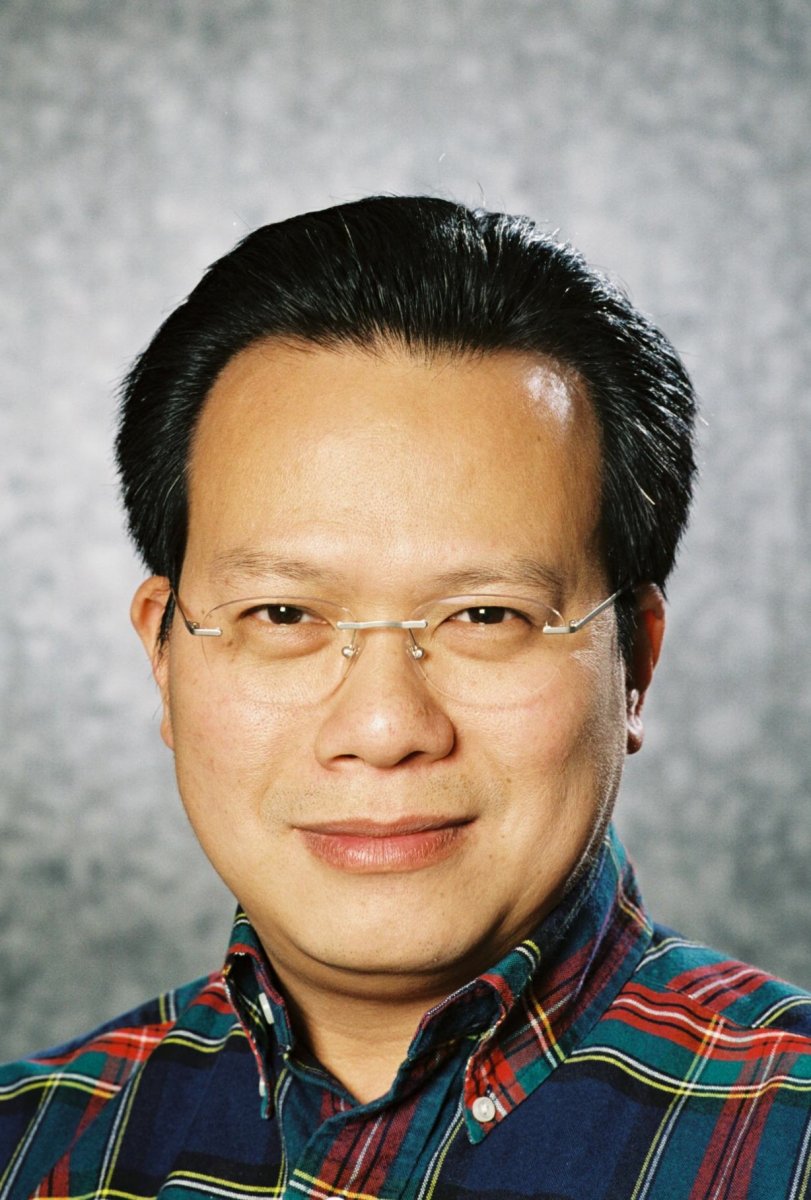News
openEHR: A Game Changer Comes of Age
 I’ve been watching openEHR over more than fifteen years and have always been impressed by its potential to enable us to do things differently, but it’s been a slow burn, with limited take up, particularly in the United Kingdom (UK) where it was invented. However, recent developments mean that I think this is about to change and that openEHR is going to take off in a big way which is going to revolutionize how we think about and do digital health and increase the speed at which we can do it by at least two orders of magnitude. Why do I say this and what evidence is there to support my assertion?
I’ve been watching openEHR over more than fifteen years and have always been impressed by its potential to enable us to do things differently, but it’s been a slow burn, with limited take up, particularly in the United Kingdom (UK) where it was invented. However, recent developments mean that I think this is about to change and that openEHR is going to take off in a big way which is going to revolutionize how we think about and do digital health and increase the speed at which we can do it by at least two orders of magnitude. Why do I say this and what evidence is there to support my assertion?
- Login to post comments
- News
Is Machine Interoperability the Next Unusable Level of Meaningful Use?
 As the HIMSS15 extravaganza is getting under way, and every EHR vendor flush with cash from the Meaningful Use bonanza is preparing to take its unusable product to the next level, machine interoperability is shaping up to be the belle of the ball. A simple minded person may be tempted to wonder why people who, for decades, manufactured and sold EHRs that don’t talk to each other, are all of a sudden possessed by interoperability fever. The answer is deceptively simple. After exhausting the artificially created market for EHRs, these powerful captains of industry figured out that extracting rents for machine interoperability is the next big thing.
As the HIMSS15 extravaganza is getting under way, and every EHR vendor flush with cash from the Meaningful Use bonanza is preparing to take its unusable product to the next level, machine interoperability is shaping up to be the belle of the ball. A simple minded person may be tempted to wonder why people who, for decades, manufactured and sold EHRs that don’t talk to each other, are all of a sudden possessed by interoperability fever. The answer is deceptively simple. After exhausting the artificially created market for EHRs, these powerful captains of industry figured out that extracting rents for machine interoperability is the next big thing.
- Login to post comments
- News
Can Providers Continue the Healthcare Continuum Without Medical Apps?
 Healthcare applications face different challenges than their counterpart in consumer applications. They are not designed to replace providers or to improve the efficiency and scalability of providers. EMR and EHR systems have common characteristics with a database system, but they are designed for healthcare. In other words, healthcare needs its own stack. Healthcare middleware must address all the common services required to support application development. Having a set of APIs access EMR and EHR systems is the starting point, but not the complete solution. Messaging, workflow, rule engine services, and more must be part of a middleware solution. Its footprint must be lightweight and cost efficient so that it can be embedded with the applications. The real healthcare challenge is addressing the missing healthcare applications in support of a diverse care environment. Our efforts must align to inspire developers in addressing providers’ needs. It will be healthcare applications that will evolve healthcare to the next level.
Healthcare applications face different challenges than their counterpart in consumer applications. They are not designed to replace providers or to improve the efficiency and scalability of providers. EMR and EHR systems have common characteristics with a database system, but they are designed for healthcare. In other words, healthcare needs its own stack. Healthcare middleware must address all the common services required to support application development. Having a set of APIs access EMR and EHR systems is the starting point, but not the complete solution. Messaging, workflow, rule engine services, and more must be part of a middleware solution. Its footprint must be lightweight and cost efficient so that it can be embedded with the applications. The real healthcare challenge is addressing the missing healthcare applications in support of a diverse care environment. Our efforts must align to inspire developers in addressing providers’ needs. It will be healthcare applications that will evolve healthcare to the next level.
- Login to post comments
- Feature Story
Why Don't we Value Open Source Software Assets?
 Developers and software providers love open source software (OSS) for its capability, maturity, accessibility and transparency. So why isn't there more promotion of the use of open source software and why do procurement professionals find it so difficult to grasp the value of open source software? One of the key reasons may lie in the genuine lack of clarity that surrounds the accounting of open source software, which has zero license cost. The ubiquitous use of open source throughout the technology sector coupled with the lack of accounting policy clarity surrounding the acts of creating and open source software, is undervaluing the assets of software intensive sectors like finance and healthcare and of large institutions like the National Health Service (NHS).
Developers and software providers love open source software (OSS) for its capability, maturity, accessibility and transparency. So why isn't there more promotion of the use of open source software and why do procurement professionals find it so difficult to grasp the value of open source software? One of the key reasons may lie in the genuine lack of clarity that surrounds the accounting of open source software, which has zero license cost. The ubiquitous use of open source throughout the technology sector coupled with the lack of accounting policy clarity surrounding the acts of creating and open source software, is undervaluing the assets of software intensive sectors like finance and healthcare and of large institutions like the National Health Service (NHS).
- Login to post comments
- Feature Story
5 DIY Hardware Platforms for Physiological Computing
 Physiological computing focuses on the use of biosignals for the development of interactive software and hardware systems capable of sensing, processing, reacting, and interfacing the digital and analog worlds. However, biosignals have specific requirements for which typical physical computing platforms are not particularly tuned. Until recently, many projects ended up hindered by high costs and limited access to suitable hardware materials. That scenario is different today, partially thanks to the following 5 DIY hardware platforms...
Physiological computing focuses on the use of biosignals for the development of interactive software and hardware systems capable of sensing, processing, reacting, and interfacing the digital and analog worlds. However, biosignals have specific requirements for which typical physical computing platforms are not particularly tuned. Until recently, many projects ended up hindered by high costs and limited access to suitable hardware materials. That scenario is different today, partially thanks to the following 5 DIY hardware platforms...
- Login to post comments
- News
Engineering OpenClinica’s Future
 We believe all research participants—patients, clinicians, researchers, should have technology that meets the ‘anytime, anywhere’ expectations of a mobile, smartphone enabled world. Based on conversations with the OpenClinica community, many of you share this view as well. We are committed to making sure, at minimum, that OpenClinica’s patient engagement technology ‘just works’ in mobile, real world environments. Wherever possible, we will go beyond that and work to make the participant experience engaging, fun, and inspiring. As transformational as these patient engagement capabilities can be, what we’ve been working on is about more than that. This is about a foundation for the future of the OpenClinica project.
We believe all research participants—patients, clinicians, researchers, should have technology that meets the ‘anytime, anywhere’ expectations of a mobile, smartphone enabled world. Based on conversations with the OpenClinica community, many of you share this view as well. We are committed to making sure, at minimum, that OpenClinica’s patient engagement technology ‘just works’ in mobile, real world environments. Wherever possible, we will go beyond that and work to make the participant experience engaging, fun, and inspiring. As transformational as these patient engagement capabilities can be, what we’ve been working on is about more than that. This is about a foundation for the future of the OpenClinica project.
- Login to post comments
- News
Cloud-based EHR Interoperability Takes Front Stage
 Because our industry is still in diapers, we focus on the lack of basic interoperability and ruminate on why EHR vendors struggle (aka, refuse) to share even basic patient data. But we must take heart, health IT friends, stiffen our upper lips and look to trends and examples that create optimism (i.e., help get us out of bed in the morning): 21st century interoperation is happening in health IT. In a recent interview with Healthcare Dive, Athenahealth CEO Jonathan Bush laid out a vision for how the cloud is the disruptive technology to bring healthcare into the Internet age. He describes “level three interoperation,” where two cloud-based systems connect once and support multiple interoperations that accomplish more than just data sharing.
Because our industry is still in diapers, we focus on the lack of basic interoperability and ruminate on why EHR vendors struggle (aka, refuse) to share even basic patient data. But we must take heart, health IT friends, stiffen our upper lips and look to trends and examples that create optimism (i.e., help get us out of bed in the morning): 21st century interoperation is happening in health IT. In a recent interview with Healthcare Dive, Athenahealth CEO Jonathan Bush laid out a vision for how the cloud is the disruptive technology to bring healthcare into the Internet age. He describes “level three interoperation,” where two cloud-based systems connect once and support multiple interoperations that accomplish more than just data sharing.
- 1 comment
- News
The European Commission To Create Level Playing Field For Open Source
 The European Commission (EC) announced on March 27 that it is going to create a level playing field for open source software when procuring new software solutions. Evaluation of open source and proprietary software will take into account their total cost of ownership and exit costs. “For all future IT developments, the Commission shall promote the use of products that support recognized, well-documented and preferably open technical specifications that can be freely adopted, implemented and extended. Interoperability is a critical issue for the Commission, and use of well-established standards is a key factor to achieve it”, the EC announces in a new ten point strategy.
The European Commission (EC) announced on March 27 that it is going to create a level playing field for open source software when procuring new software solutions. Evaluation of open source and proprietary software will take into account their total cost of ownership and exit costs. “For all future IT developments, the Commission shall promote the use of products that support recognized, well-documented and preferably open technical specifications that can be freely adopted, implemented and extended. Interoperability is a critical issue for the Commission, and use of well-established standards is a key factor to achieve it”, the EC announces in a new ten point strategy.
- Login to post comments
- News
‘Open Source, Open Science’ meeting report – March 2015
 On March 19th and 20th, the Center for Open Science hosted a small meeting in Charlottesville, VA, convened by COS and co-organized by Kaitlin Thaney (Mozilla Science Lab) and Titus Brown (UC Davis). People working across the open science ecosystem attended, including publishers, infrastructure non-profits, public policy experts, community builders, and academics. Read More »
On March 19th and 20th, the Center for Open Science hosted a small meeting in Charlottesville, VA, convened by COS and co-organized by Kaitlin Thaney (Mozilla Science Lab) and Titus Brown (UC Davis). People working across the open science ecosystem attended, including publishers, infrastructure non-profits, public policy experts, community builders, and academics. Read More »
- Login to post comments
- News
South Africa’s Quadruple Burden of Disease
 Three years ago, I found myself on a bus in South Africa, with fifteen of my college classmates. We were on our way to Kruger National Park, after a week of volunteering and researching in Cape Town. As I stared out the window, appreciating rural South Africa’s beauty, a large billboard, seemingly in the middle of nowhere, caught my attention. “Relay for Life: A Fundraiser for the American Cancer Society.” This poster piqued my curiosity. I had always associated South Africa with HIV/AIDS and tuberculosis. In fact, I had documented a handful of posters in Cape Town that aimed to combat HIV/AIDS by reducing stigma and encouraging testing...
Three years ago, I found myself on a bus in South Africa, with fifteen of my college classmates. We were on our way to Kruger National Park, after a week of volunteering and researching in Cape Town. As I stared out the window, appreciating rural South Africa’s beauty, a large billboard, seemingly in the middle of nowhere, caught my attention. “Relay for Life: A Fundraiser for the American Cancer Society.” This poster piqued my curiosity. I had always associated South Africa with HIV/AIDS and tuberculosis. In fact, I had documented a handful of posters in Cape Town that aimed to combat HIV/AIDS by reducing stigma and encouraging testing...
- Login to post comments
- News